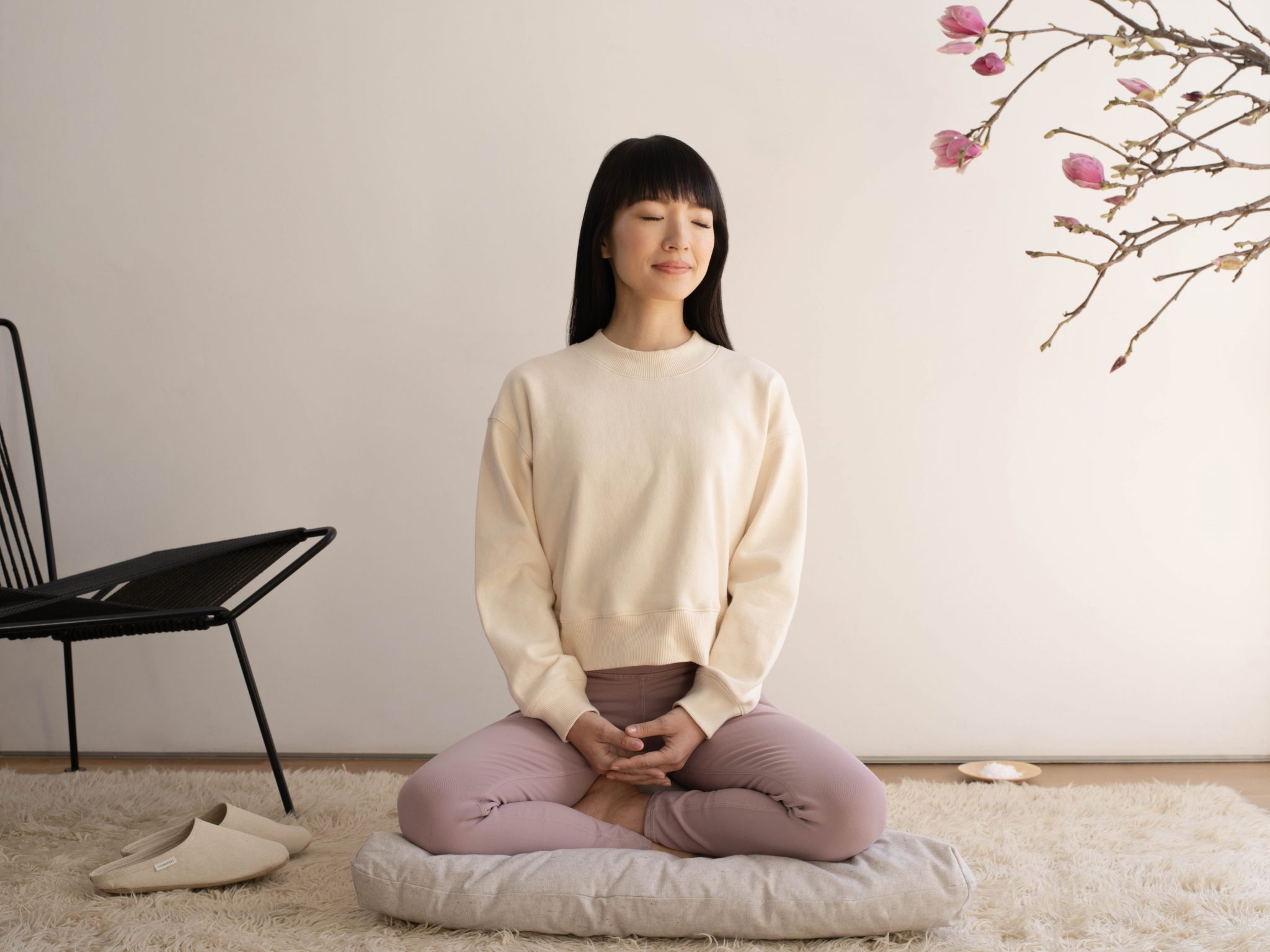5 Rituals to Build Self-Acceptance


Self-criticism is an all too common struggle. Even the most successful people in the world experience bouts of imposter syndrome and low self-esteem. But the person you’ll spend the most time with in your life is yourself. We owe it to ourselves to strengthen our self-compassion and embrace self-love.
One of the simplest ways to build self-acceptance is to make it a part of your self-care routine. The following rituals, sourced from mindfulness experts and one of our Master KonMari Consultants, can be completed in as little as five minutes daily. Try one for a month — you’ll be surprised how much better you treat yourself.
Take Note of what Others Love About You
If you struggle with self-acceptance, it can be challenging to write a list of things you love about yourself. Rather than forcing yourself, Jordan Pickell, MCP, RCC, recommends asking for inspiration from the people who love you the most.
“Ask your friends what they love about you. This works on two levels: other people can see strengths and talents we cannot see in ourselves, and when other people express their love for us, we are more likely to love ourselves,” says Pickell.
To increase the value of these thoughts, write them down somewhere you can see them daily, like the Notes app on your phone. Or use Master KonMari Consultant Emi Louie’s technique: Use your phrases as mantras during a daily yoga session.
“Yoga allows me to better connect to my body, thereby better connecting to myself,” says Louie. “The breathwork in yoga helps me feel more calm, with more mental clarity. I use the final savasana pose to recite affirmations or mantras to myself, including loving-kindness phrases.” This also combines two positive habits for a more powerful boost — research shows that yoga poses increase self-esteem more than the “power poses” of TedTalk fame.
Start a Positive Self-Talk Ritual

Negative self-talk can deeply affect our mental health, yet many of us engage in it more than we realize. Rather than beating yourself up for negative self-talk — a vicious cycle! — try adding positive self-talk.
“Research shows that how you talk to yourself makes a difference,” says Sonia Jhas, wellness expert and author of, “I’ll Start Again Tomorrow (And Other Lies I’ve Told Myself).” “Cultivating a more positive and compassionate inner monologue can create real improvements in your physical and mental health.”
This is Jhas’ preferred positive self-talk ritual:
Step 1: Designate about ten to fifteen minutes each day to check in with yourself from a place of kindness, understanding, and acceptance (Jhas likes to use a journal for this exercise).
Step 2: Make this time intentional and precious. “Turn on your diffuser, light a candle, or make yourself a cup of tea,” says Jhas.
Step 3: Begin by asking yourself: “How am I feeling?” Express your feelings plainly and honestly, without judgment. Some prompts Jhas suggests:
- I feel misaligned with…
- I feel panicked about…
- I feel disappointed by…
- I feel fulfilled by…
- I feel open to…
- I feel curious about…
“You may notice that your negative narrative wants to take over as you explore your feelings,” she says. “Go ahead and name those negative feelings. Then, empower yourself to shift your energy towards replacing the negative self-talk with friendly compassion. Investigate how much truth there is in your negative thoughts. [For example,] Do you really not deserve to be happy just because you’re not motivated to exercise every day? The answer is no.”
Jhas suggests replacing each negative narrative with gentler, kinder affirmations, such as: “I feel disappointed by my lack of motivation to exercise daily… so, I will aim to exercise three times a week to start… so, I will be more likely to build satisfaction and momentum…so it will make me feel good.”
After the practice, check in with how you feel. Do you feel lighter? More joyful? Inspired?
Plan Solo Days
In this busy world, many of us struggle to make time to spend alone. Planning a date with yourself can profoundly improve both your perception of the world and your self-worth.
“Taking a solo day each month is an excellent way to boost self-confidence and cultivate greater self-acceptance,” says Steve Carleton, LCSW, CAC III. “During this time, individuals can break away from the hustle and bustle of everyday life, recharge their energy levels, and do something that is just for themselves. Whether it’s a hike in nature or curling up with a good book, solo days can provide an opportunity to reconnect with oneself and gain perspective on life.”
If you struggle to make time for yourself, it can help to schedule a solo date in your calendar — just like you would a date with an old friend or partner. Honor yourself by sticking to it.
Try Mirror Meditation
When you look in the mirror each morning, do you tend to focus on imperfections and lack? You may be the ideal candidate for mirror meditation, a research-based practice by Dr. Tara Well. The process involves tuning into your breathing, then setting a soft gaze on your own eyes in your mirror. Then, let thoughts come and go, mindfully and gently, until negative thoughts fall away.
“As we spend more time alone and on our devices, we miss out on the face-to-face reflection that helps us stay emotionally connected to ourselves. The mirror can be a valuable tool for maintaining that connection,” writes Dr. Well. “In my work, it has been astonishing to see how unkind people can be to themselves without even realizing it. The mirror reflects our self-criticism with exquisite accuracy and then mirror meditation provides a choice, and a practice, to treat ourselves with kindness.”
Experiment with Cyclic Sighing
Cyclic sighing is a breathing technique that involves taking a deep sigh, followed by a short sigh, and a release. A recent Stanford study found that cyclic sighing improved feelings of happiness and lowered anxiety more than meditation.
According to Kat Vollono, LCSW, who specializes in working with general anxiety, relationship anxiety, and financial anxiety, cyclic sighing might be particularly beneficial for people who struggle with self-acceptance in stressful situations — especially because it only requires five minutes. “It can be used as a way to prevent feeling anxiety associated with self-acceptance in current and future stressful situations, such as before an important meeting or a social event,” she says. “[And] the technique can be done anywhere and at any time.”
Here is Vollono’s technique:
Step 1: Set a timer for 5 minutes
Step 2: Take a deep breath and fill your lungs completely for a count of one.
Step 3: Take another shorter breath at the top of the last breath, again filling your lungs to capacity (it will be shorter than your first inhale).
Step 4: Release through your nose for a count of two.
Step 5: Repeat this process until the timer rings.
***
One of the greatest gifts we can give ourselves is self-acceptance. Use one or all of these rituals to treat yourself the way you deserve: like a worthy, joy-sparking human being.







